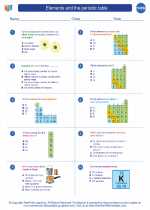Crystalline Structure
Crystalline structure refers to the arrangement of atoms or molecules in a solid material. In a crystalline structure, the particles are arranged in a highly ordered and repeating pattern, extending in three dimensions. This ordered arrangement gives crystalline materials their characteristic properties, such as cleavage and anisotropy.
Key Concepts
- Lattice: The three-dimensional arrangement of points in a crystal that represents the positions of the atoms.
- Unit Cell: The smallest repeating unit that represents the entire crystal lattice.
- Crystal System: The classification of crystals based on their symmetry and the lengths of their crystallographic axes.
- Crystallography: The study of the arrangement of atoms in crystalline solids.
- Polymorphism: The ability of a solid material to exist in more than one crystal form.
Types of Crystals
Crystals can be classified into several types based on their crystalline structure:
- Ionic Crystals: Formed by the attraction between positively and negatively charged ions.
- Covalent Crystals: Held together by a network of covalent bonds.
- Metallic Crystals: Composed of metal atoms held together by metallic bonds.
- Molecular Crystals: Comprised of discrete molecules held together by intermolecular forces.
Crystal Lattice and Unit Cell
The crystal lattice is a three-dimensional array of points that represents the positions of the atoms in the crystal. The unit cell is the smallest repeating unit that, when stacked together in three dimensions, reproduces the entire lattice. There are seven crystal systems, each with its unique unit cell shape and dimensions.
Crystallography and X-ray Diffraction
Crystallography is the study of the arrangement of atoms in crystalline solids. One of the most important techniques in crystallography is X-ray diffraction, which uses the scattering of X-rays by the crystal lattice to determine the atomic and molecular arrangement in a crystal.
Properties of Crystalline Materials
Crystalline materials exhibit several characteristic properties, including:
- Cleavage: The tendency of a crystal to break along certain planes or directions.
- Anisotropy: The property of exhibiting different physical properties in different crystallographic directions.
- Refraction and Birefringence: The ability to bend and split light into two rays when passing through the crystal.
Study Tips
When studying crystalline structure, it's important to:
- Understand the different crystal systems and their characteristics.
- Practice visualizing unit cells and crystal lattices in three dimensions.
- Learn about the properties and uses of various types of crystals.
- Explore real-world applications of crystallography, such as in material science and pharmaceuticals.
◂Chemistry Worksheets and Study Guides High School. Elements and the periodic table

 Worksheet/Answer key
Worksheet/Answer key
 Worksheet/Answer key
Worksheet/Answer key
 Vocabulary/Answer key
Vocabulary/Answer key
 Vocabulary/Answer key
Vocabulary/Answer key
 Vocabulary/Answer key
Vocabulary/Answer key
